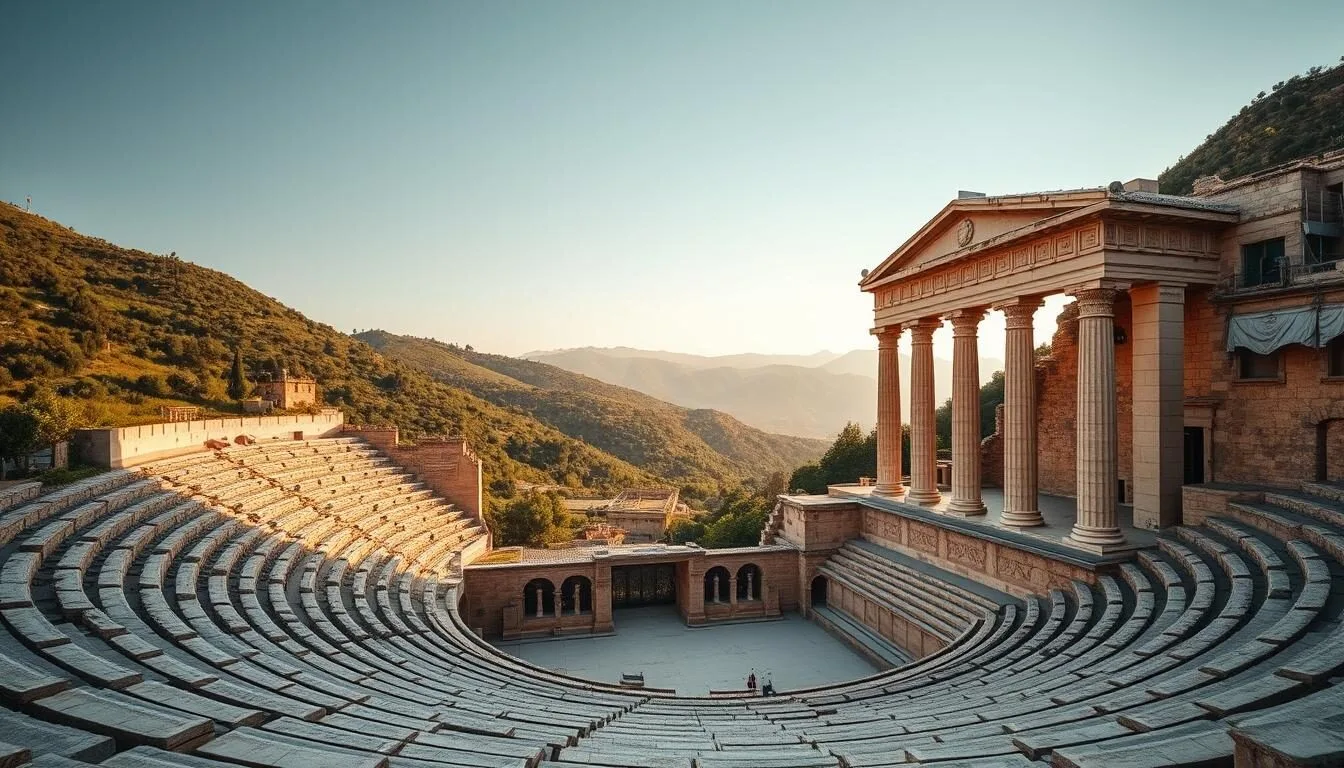✓ Accommodations✓ Flights✓ Rental Cars
Imagine walking through a valley in the Peloponnese region, surrounded by ancient ruins that whisper tales of a bygone era. You are in Epidaurus, a historical gem that offers a unique glimpse into classical Greek civilization. As a UNESCO World Heritage site, Epidaurus is home to the famous Ancient Theatre, renowned for its perfect acoustics and remarkable preservation.
As you explore this ancient healing center, you’ll uncover the historical significance of the Temple of Asklepios and the Tholos. People from across the Mediterranean once came to Epidaurus seeking cures and spiritual solace. Today, you can experience the magic of this ancient site, understanding why it remains one of Greece’s most important archaeological sites.
The Historical Significance of Epidaurus
As you explore Epidaurus, you’ll uncover a rich history that spans centuries, from its origins as a small settlement to its rise as a prominent healing center. The name “Epidaurus” originates from Epidauro, a hero of the region and son of Apollo. This area was once a sanctuary where people from all over Greece came for healing and spiritual solace.
Origins of Ancient Epidaurus
The Sanctuary of Asclepius was founded in the 6th century BC, marking the beginning of Epidaurus’s journey to becoming a major healing center. By the 4th century BC, Epidaurus had reached its peak, attracting individuals seeking medical treatment, artists, and philosophers. The evolution of Epidaurus from a small settlement to a sophisticated medical center dedicated to Asklepios, the god of medicine, is a testament to its historical significance. The site’s development was influenced by early ceremonial healing practices, which eventually gave way to more advanced medical care.
| Century | Event | Significance |
|---|---|---|
| 6th century BC | Founding of the Sanctuary of Asclepius | Marked the beginning of Epidaurus as a healing center |
| 4th century BC | Epidaurus reaches its peak | Became a major religious and medical center in the Ancient World |
Why Epidaurus is a UNESCO World Heritage Site
Epidaurus earned its UNESCO World Heritage status due to its architectural significance and its crucial role in the development of medicine. The site’s well-preserved archaeological remains provide valuable insights into the practices and rituals of ancient healing centers. The criteria for its UNESCO designation recognized the site’s importance as a cultural and historical landmark.
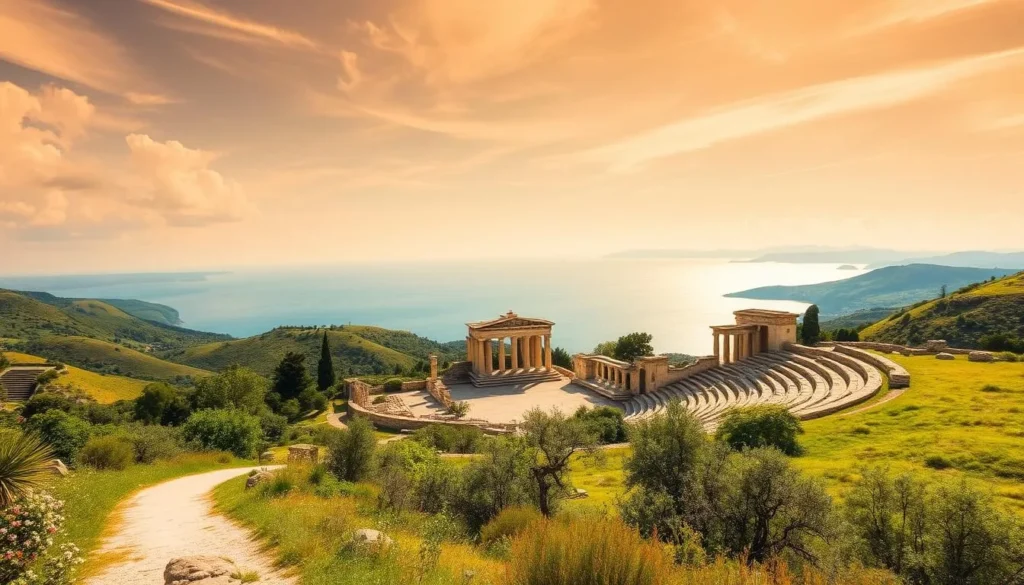
The historical timeline of Epidaurus, from its founding through its golden age, showcases its development into an independent city-state with its own coins and laws. This rich history, coupled with its architectural and medical significance, solidifies Epidaurus’s place as a UNESCO World Heritage Site.
The Ancient Theatre of Epidaurus: A Masterpiece of Classical Architecture
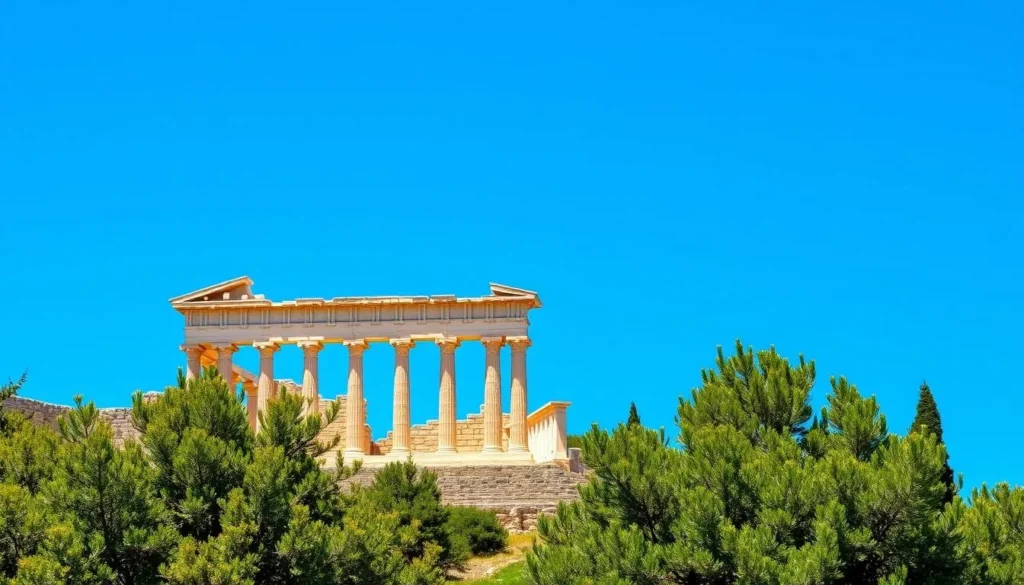
The Ancient Theatre of Epidaurus is a breathtaking example of classical Greek architecture that continues to awe visitors from around the world. Considered one of the purest masterpieces of Greek architecture, this ancient theatre is renowned for its exceptional acoustics and well-preserved structure.
The Perfect Acoustics: Engineering Marvel
The theatre’s acoustics are truly remarkable, allowing even the faintest sound from the stage to be heard clearly at the top row. This phenomenon continues to amaze modern acoustics experts, who marvel at the ancient engineering genius that went into designing this one of the purest masterpieces of classical architecture.
Even if you’re sitting in the highest row, you can hear a pin drop on the stage, a testament to the theatre’s exceptional acoustic properties. The architectural principles and design elements that have preserved this 4th century BC structure in such exceptional condition are a subject of great interest among historians and architects.
Attending Performances at the Epidaurus Festival
During the summer months, the Epidaurus Theatre comes alive with performances as part of the Epidaurus Festival. You can experience live performances in the same space where ancient Greeks gathered thousands of years ago, creating a truly unique and unforgettable experience.
The Epidaurus Festival is a celebration of the arts, with a diverse range of performances that showcase the best of Greek culture. Whether you’re interested in theatre, music, or dance, there’s something for everyone at this vibrant festival.
Visitor Experience and Photography Tips
To make the most of your visit to the Ancient Theatre of Epidaurus, consider the following photography tips: visit during the golden hour for soft, warm lighting; look for vantage points that convey the scale and grandeur of the theatre; and don’t be afraid to experiment with different angles and compositions.
As you explore the theatre, take a moment to appreciate the intricate details and craftsmanship that have gone into its construction. With its exceptional acoustics and stunning architecture, the Ancient Theatre of Epidaurus is a truly unforgettable experience.
The Sanctuary of Asklepios: Cradle of Medicine
In the heart of Epidaurus lies the Sanctuary of Asklepios, a historical site that was once the epicenter of healing practices in the ancient world. This sacred place was dedicated to Asklepios, the god of medicine, and attracted people from all over the ancient world seeking cures for their ailments.
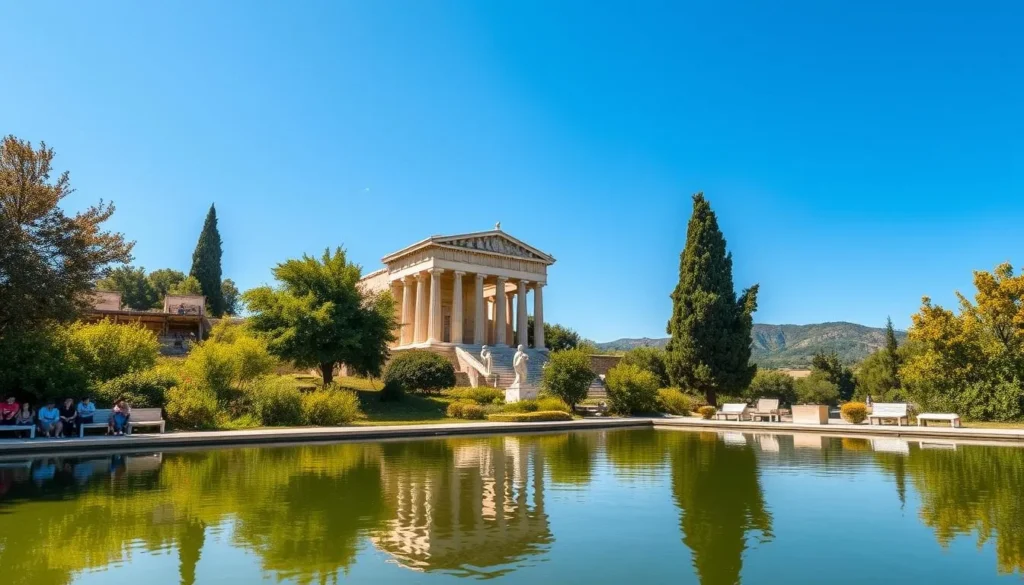
Ancient Healing Practices and Rituals
The healing practices at the Sanctuary of Asklepios were a unique blend of spiritual and practical methods. Patients would undergo purification rituals, often involving the sacred spring’s waters, before being guided to sleep in dormitories where they would receive divine healing guidance through dreams. The priests and physicians at the sanctuary observed symptoms, developed treatments, and documented recoveries, laying the groundwork for modern medical practices.
Healing rituals were central to the sanctuary’s operations, with a focus on both spiritual and physical well-being. The use of dream therapy, where patients’ dreams were interpreted for healing instructions, was a distinctive aspect of the treatments offered.
| Healing Practice | Description |
|---|---|
| Purification Rituals | Involved the use of sacred spring waters to cleanse patients spiritually and physically. |
| Dream Therapy | Patients slept in dormitories to receive healing guidance through their dreams. |
| Medical Treatments | Physicians observed symptoms, developed treatments, and documented patient recoveries. |
Key Structures Within the Sanctuary
The Sanctuary of Asklepios was a complex of various structures, each serving a specific purpose in the healing process. The Temple of Asklepios was the central religious structure, while the sacred spring provided water for purification rituals. Dormitories where patients slept to receive divine guidance were also key components, alongside areas designated for medical treatments and surgeries.
Archaeological findings, including medical instruments and votive offerings, have provided valuable insights into the healing practices and medical knowledge of the ancient Greeks. These discoveries highlight the sanctuary’s role in the development of medical science.
Epidaurus, Greece: Best Things to Do – Top Picks
From ancient theaters to sacred sanctuaries, Epidaurus is a destination that promises an unforgettable journey through history. As you explore this ancient site, you’ll have the opportunity to visit some of the most significant archaeological sites in Greece.
The Archaeological Museum of Epidaurus
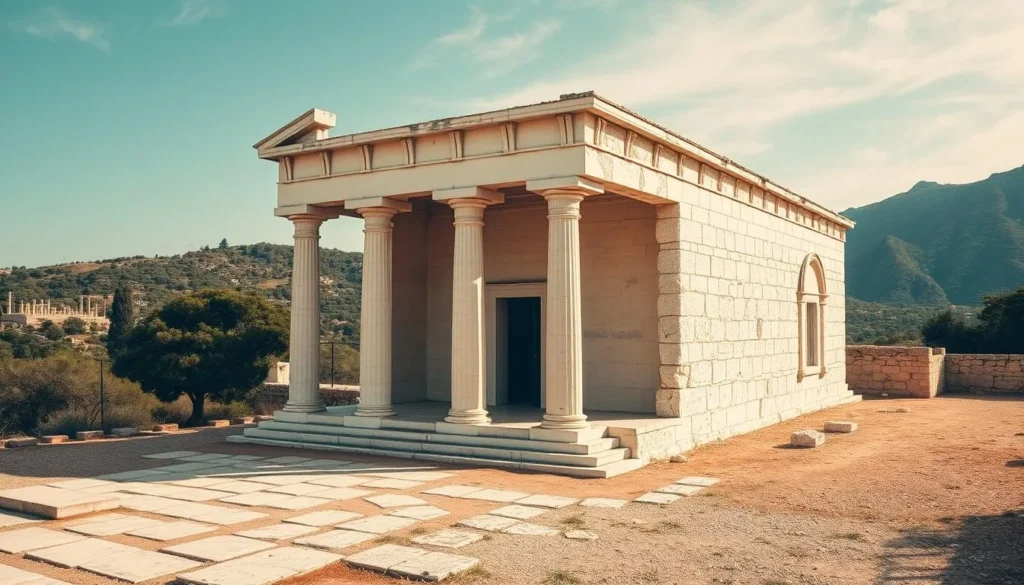
The Archaeological Museum of Epidaurus is a treasure trove of historical artifacts, located next to the Ancient Theatre. This small but impressive museum hosts a variety of interesting findings from excavations on the site, including statues, medical instruments, and architectural elements that shed light on ancient healing practices.
As you explore the museum, you’ll discover artifacts that bring to life the history and culture of Epidaurus. The exhibits are carefully curated to provide insight into the daily lives of the ancient Greeks and their approach to medicine and wellness.
The Tholos and Temple of Asklepios
The Tholos and Temple of Asklepios are two of the most significant structures within the Sanctuary of Asklepios. The Tholos, with its intricate design, is a masterpiece of Classical Greek architecture, while the Temple of Asklepios was the spiritual heart of the sanctuary where ancient Greeks would make offerings to the god of medicine.
These structures not only showcase the architectural prowess of the ancient Greeks but also highlight the importance of Asklepios in their culture and daily life.
The Ancient Stadium of Epidaurus
The Ancient Stadium of Epidaurus is a testament to the connection between physical fitness and health in ancient Greek culture. Constructed in the late Classical times, the stadium was used during the quadrennial festival to honor Asklepios, featuring athletic competitions that were an integral part of the celebrations.
The Little Theatre of Ancient Epidaurus
The Little Theatre of Ancient Epidaurus is a charming performance space that still hosts intimate musical and theatrical events during the summer months. Built in different stages from the 4th century BC till the Hellenistic times, this theatre is a unique blend of history and culture.
Beyond the Main Archaeological Sites
There’s more to Epidaurus than its ancient theatre and sanctuary; the region is rich in hidden gems and local experiences. While the main archaeological sites are a must-see, venturing beyond them can reveal a more nuanced understanding of this ancient civilization and its surroundings.
The Sunken City of Ancient Epidaurus
Explore the mysterious Sunken City of Ancient Epidaurus, where crystal-clear waters reveal the submerged ruins of what was likely an ancient trading post. Snorkelers and glass-bottom boat tours can witness the fascinating remains, including house foundations, pottery, and structural supports.
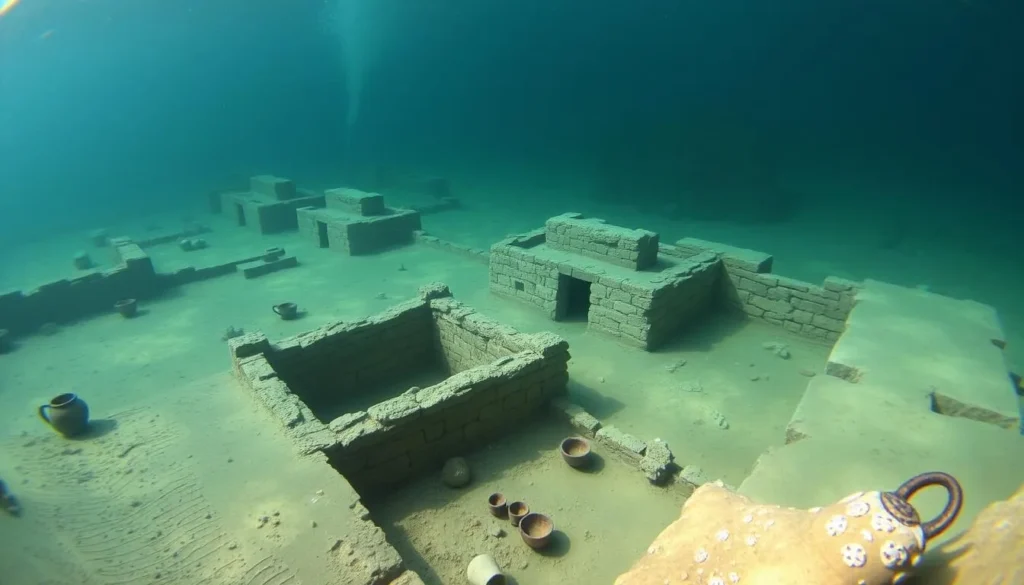
Monastery of Panagia Agnountos
Visit the serene Monastery of Panagia Agnountos, an 18th-century Byzantine structure renowned for its beautiful frescoes and peaceful setting near the mountainous village of Nea Epidaurus. The monastery’s tranquil atmosphere and stunning architecture make it a compelling stop on any Epidaurus day trip.
Local Olive Oil Tours and Tastings
Immerse yourself in local culture with an olive oil tour and tasting experience at places like the Melas Olive Oil Mill. Learn about traditional production methods, sample some of Greece’s finest olive oils, and savor delicious olive oil snacks. This experience is a perfect addition to your Epidaurus day trip itinerary, offering a taste of local gastronomy.
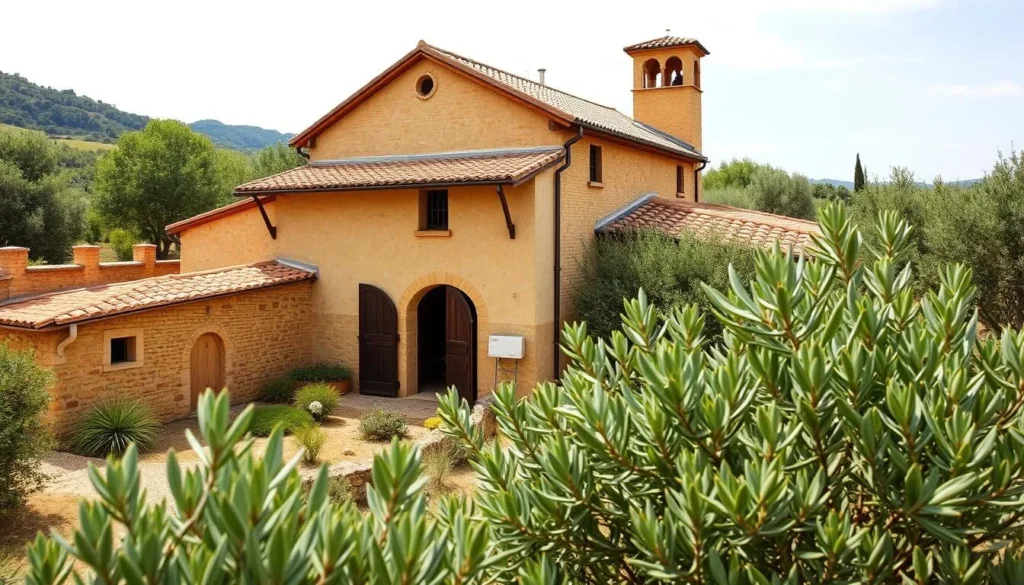
By incorporating these diverse attractions into your Epidaurus day trip, you can enjoy a perfect balance of history, culture, nature, and gastronomy, making your visit to Epidaurus a truly unforgettable experience.
Planning Your Visit to Epidaurus
Getting the most out of your visit to Epidaurus involves knowing when and how to visit. To help you plan, we’ve put together essential information on the best times to experience this ancient wonder, considering both weather conditions and crowd levels throughout the year.
Best Time to Visit and Weather Considerations
Epidaurus has a Mediterranean climate, characterized by hot, dry summers and mild, wet winters. The best time to visit Epidaurus is in spring or early autumn when the weather is pleasant and the crowds are fewer. Summers are usually hot and crowded, especially when performances are held in the 4th century theatre.
- Spring: Enjoy mild temperatures and fewer tourists.
- Summer: Expect hot weather and large crowds, especially during performances.
- Autumn: Pleasant weather with fewer crowds, ideal for exploration.
- Winter: Mild and wet, but some facilities may be closed.
Entrance Fees and Opening Hours
Understanding the site‘s operational hours and ticket prices can help you plan your day. The Sanctuary at Epidaurus is open from 8:00 to 20:00 during May-August, with shorter hours in other seasons. Ticket prices vary by season: €20 in summer, with a concession price of €10, and a reduced rate of €6 between November and March.
| Season | Entrance Fee | Opening Hours |
|---|---|---|
| Summer | €20 / €10 | 8:00 – 20:00 |
| Winter | €6 | Shorter hours |
Visitor Etiquette and Rules to Follow
To preserve this UNESCO World Heritage site for future generations, certain rules must be followed. Playing any musical instrument without permission is strictly prohibited, and flying drones within the site is not permitted. Additionally, pets, including dogs, are not allowed on the premises, and smoking is strictly prohibited within the archaeological site.
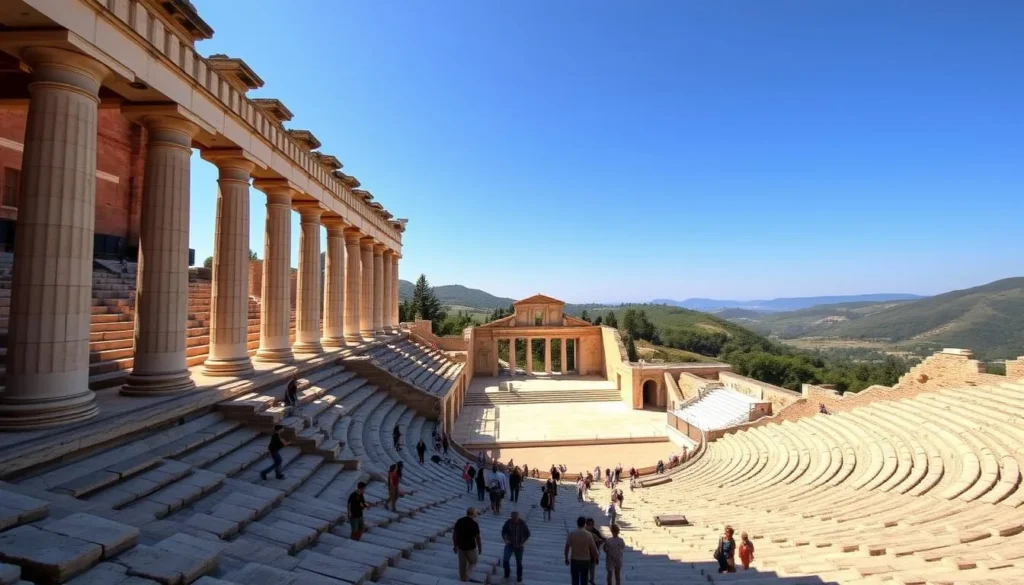
By understanding and adhering to these guidelines, you can ensure a respectful and enjoyable visit to Epidaurus. Whether you’re exploring the ancient theatre or the Sanctuary of Asklepios, being mindful of the rules helps preserve the site for future visitors.
Day Trips and Transportation Options

Whether you’re based in Athens or Nafplio, getting to Epidaurus is easier than you think, with various travel options at your disposal. You can choose between public transportation, guided tours, or independent travel, depending on your preference and budget.
From Athens to Epidaurus
To travel from Athens to Epidaurus, you can catch a KTEL bus from Kifisos station. The journey takes about 2 hours, covering a distance of 130km. You may need to transit in Nafplion or Palaia Epidaurus. While using public transport can be a bit tricky for a day trip due to timetable constraints, it’s a viable option.
From Nafplio to Epidaurus
The journey from Nafplio to Epidaurus is significantly shorter, taking about 30 minutes to cover 30km. This makes Nafplio an ideal base location for your visit to Epidaurus.
Guided Tours vs. Independent Travel
You can opt for guided tours that include transportation and historical context, or choose independent travel for flexibility. Guided tours often combine Epidaurus with other nearby attractions like Mycenae and Nafplio, maximizing your Peloponnese experience.
When deciding, consider factors like rental cars, parking, bus schedules, and tour operators to make the best choice for your travel style and budget.
Conclusion: Experiencing the Magic of Epidaurus
The experience of visiting Epidaurus is a testament to the enduring legacy of ancient Greek culture. As you explore this UNESCO World Heritage site, you are immersed in the history and significance of the Ancient Theatre of Epidaurus and the Sanctuary of Asklepios. The theatre continues to host summer performances, connecting visitors today with the cultural traditions of ancient Greece. This sacred place, dedicated to the god of medicine, Asklepios, offers insights into early healing practices. Visiting Epidaurus is a profound experience that leaves a lasting impression on people from around the world.
The above is subject to change.
Check back often to TRAVEL.COM for the latest travel tips and deals.
